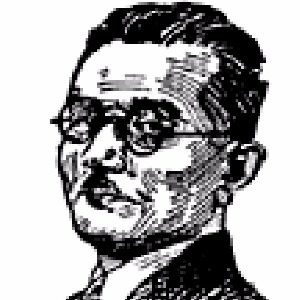Storywriter and novelist (b. 1895, İstanbul - d. 1971, İstanbul). He
attended Ayasofya Central School
(1908), the elementary class of İstanbul
High School (1911), Hadika-i Meşveret
High School (1912) and graduated from İstanbul University Faculty of Literature (1920).
During his years at the faculty, he worked as a teacher of Turkish at Beşiktaş
İttihat ve Terakki
School and the High
School for Orphans. He also worked as a writer and translator for several
newspapers. He went to Ankara
to support the national government during the Independence War. For a while he
was in covert operations in the territories under Greek occupation where he
served as a correspondent and wrote articles for the newspaper İkdam. When the war ended in victory, he
went to Lausanne as the representative of the
newspaper Öğüt, which was published in Ankara. Later he worked as the Head of the
Turkish Press Office, which had been re-established in London. In 1924, he began to work for the
Ministry of Foreign Affairs and served as the third secretary to the Embassy in
Berlin, second secretary to the Turkish
Embassy in Belgrade in 1925 and as the second
secretary to the Turkish Embassy in Sofia
and vice-consul in 1926. He served as the Director of the Press Department for
a while. In the following years, he went back to İstanbul to work as a writer
in the newspaper Cumhuriyet and as a
teacher of history and geography at Kadıköy
Saint Joseph High School and at the High School for
Orphans.
Ahmet Hidayet’s interest in journalism is due to his father Tahir
Efendi, who established a printing house under the name Nümunei Tıbaat in
İstanbul after the revolution in 1908. He practiced writing in the papers at
the printing house when he was very young. He was a student of Şahabettin
Süleyman at İstanbul
High School and started
to study literature and the arts and grew interested in world literature,
sociology and philosophy, improving his French at the same time. When he was
only fifteen, in 1910, his article with the title Gülden Kelebeğe (From a Rose to a Butterfly) was published in the
review Şahika and when he was a
student at high school, in 1911, he began to translate articles and write short
stories for the newspaper Tercümanı
Hakikat. During his years at the High School for Orphans, he intensified
his work and had his research on world literature, articles on social issues
and short stories published in the review Servet-i
Fünûn. He joined the group “Nayiler” (Flautists), pioneered by Halit Fahri,
Salih Zeki, Faruk Nafiz and Yusuf Ziya, which was established during the
Independence War and aimed at starting a new literary movement within the pages
of the review Servet-i Fünûn. He also
translated works from Western literature and wrote critiques. After 1920,
besides publishing his literary works, he spent most of his time working in
journalism and worked for the newspapers İleri
and İkdam in İstanbul. In 1921, he
wrote anecdotes under the title İstanbullunun
Defteri (Notebook of an İstanbul Dweller) with the pen name “Şehir Uşağı”
(Servant of the City) and important articles under the title Edebi Musahabe (Literary Conversations)
under his own name. His letters to the newspaper İkdam from the territories under Greek occupation in 1922 are of historical
importance, despite the fact they were frequently subjected to foreign
censorship.
He continued as a journalist during his years in Vienna,
Berlin and Sofia between 1924-1926 and sent letters to
the newspapers Milliyet and Millet, published in İstanbul, about the political
and social developments in the countries he went to. After 1927, he wrote
anecdotes, articles and short stories in the newspapers Milliyet, Son Saat,
İkdam and Politika, and in the newspaper Cumhuriyet from 1930, besides some other
reviews, under his own name and with the pen name Nuri Tevfik. He wrote
articles on women, fashion and children under the pen name Hadiye İclal.
Reel expressed his impressions of
urban life in İstanbul from various points of view in these stories. He
depicted almost every district in İstanbul, with their physical and spiritual
characteristics, with their streets, marketplaces, shops, salesmen,
transportation, inner and outer shapes and details of the buildings, in a
joyous and humorous language. Taking the themes for his stories from domestic
issues, Ahmet Hidayet’s stories consist of the simple things in life, not the
complex.
Although he did not compile the hundreds of stories he
published in reviews in a book, he published many translations and children's
books.
WORKS:
NOVEL: Yankesiciler
Kraliçesi (Queen of the Pickpockets, 1932), Yabancı Kadın (Foreign Woman).
COLLECTION: Atatürk'e
Hatıralar (Memories for Atatürk, 1949).
CHILDREN’S LITERATURE: Faydalı Hikâyeler (Useful Stories, 1933), Zehra'nın Falı (Zehra’s Fortune, 1935), Ateş Kuşu ile Bozkurt (The Firebird and The Grey wolf, 1943), Macera Peşinde (In Pursuit of an
Adventure, 1943).
He also translated the works of Bernardin de
Saint-Pierre and Emil Faguett.
